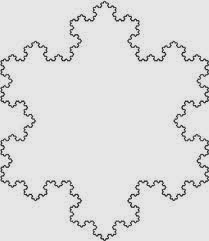1 Gender
Among respondents: 16 females, 9 males, or 64.0% female vs. 36.0% male.
In the whole class: 45 females and 25, or 64.3% female vs 35.7% male.
2 Weight
Overall: Average: 137.4 lbs, Standard Deviation: 29.9 lbs
Females: Ave 123.8, Stdev: 21.6
Males: Ave 161.7, Stdev: 27.8
3 Height Note: 60in = 5ft.
Overall: Ave 64.8in, Stdev 4.15
Females: 62.6, Stdev 2.4
Males: Ave 68.8, Stdev 3.6
Among respondents, males on average are 6.2in taller than the females. That's huge.
4 Favorite Body Part
Overall:
It is interesting to see the breakdown by gender on this one.
Females:
Males:
There appears to be more variability among what males consider their favorite body parts.
5 Number of times per month people call home
Overall: Ave: 4.9, Stdev: 2.55
Female: Ave 4.3, Stdev 2.5
Male: Ave: 6, Stdev 2.5
The data reports that males call home more often than females.
6 Number of times per month people do Laundry
Overall: Ave: 6.08, Stdev 2.17
Female: Ave: 5.9, Stdev 2.1
Male: Ave 6.4, Stdev 2.4
The data shows that males do somewhat more washes than females, but the difference may not be statistically significant.
7 How many times per month do you drink alcohol?
Overall: Ave 6.08, Stdev 2.17
Female: Ave 5.87, Stdev 5.07
Male: Ave 6.67, Stdev 4.80
Males drink more frequently on average, but there is a wider range of variability in female drinking.
8 How many dates do you go on per month?
Overall: Ave 3.32, Stdev 2.56
Female: Ave 3.25, Stdev 2.41
Male: Ave 3.44, Stdev 2.96
Males and Females go on approximately the same number of dates, but the variability in the number of male dates is wider.
9 Number of months since you last saw a movie in a theater
Overall: Ave 1.21 months since last theater movie
Females: Ave 1.02 months since last theater movie
Males: Ave 1.56 months since last theater movie
Among respondents, females attend movie theaters more often than males.
10 Number of hours per day spent browsing the internet.
Overall: Ave 3.24, Stdev 0.97
Females: Ave 3.38, Stdev 0.89
Males: Ave 3.00, Stdev 1.12
Among respondents, females use the Internet more often, but among males the usage rate has a wider range of variability. In this case, the data are clearly skewed because the highest allowable number of hours was 4, but some people use the internet more than 4 hours per day.
11 Number of emails received per day
Overall: Ave 15.20, Stdev 4.76
Females: Ave 16.06, Stdev 4.91
Males: Ave 13.67, Stdev 4.33
Females receive more emails on average.
12 Hours per week spent studying
Overall: Ave 21.80, Stdev 11.80 (Wow! That's a HUGE range of variability!)
Females: 21.25, Stdev 10.25
Males: 22.78, Stdev 14.81
Females and males spend about the same number of hours studying, but the variability among males is greater.
13 Number of college courses taken so far
Overall: Ave 16.60, Stdev 6.60
Females: Ave 17.31, Stdev 6.70
Males: Ave 15.33, Stdev 6.61
On average, females have taken more classes.
14 Number of years left before graduation
Overall: Ave 1.92, Stdev 1.10
Females: Ave 1.833, Stdev 1.18
Males: Ave 2.06, Stdev 1.01
On average, females are closer to graduation.
15 Post-Graduation Plans
Overall:
16 How many people in the class do you find attractive?
Overall: Ave 4.22, Stdev 2.75 (Very wide range of variability!)
Females: Ave 4.00, Stdev 3.01
Males: Ave 4.56, Stdev 2.41
On average, the females found fewer people attractive, but the range of variability was significantly higher.
For this one, I was highly curious about the data. Here is a closer look.
Overall:
So the Mode is "at most 2." That's cold, people, cold! What's wrong with kids today?
The averages between females and males are not that different, but just look at how differently the data breaks down:
Females:
Males:
So there we have it. According to this data set, females cluster around not being attracted to many people, but the distribution is wider. Males cluster around the average, but have a tighter distribution.
17 Favorite topic in class
Overall
18 Number of hours of sleep per night
Overall: Ave 6.69, Stdev 1.25 (6.69 seems pretty low to me!)
Females: Ave 6.50, Stdev 1.42
Males: Ave 7, Stdev 0.87
Geeze, ladies, you need to get more sleep at night! Guys, too! You should be getting 8-9 hours!
19 Number of Siblings
Overall: Ave 1.42, Stdev 1.14
Females: Ave 1.27, Stdev 0.96
Males: Ave 1.67, Stdev 1.41
The variability is very large: the standard deviation is larger than the mean.
20 Hours spent doing athletic activities
Overall: Ave 5.65, Stdev 8.46
Females: Ave 2.97, Stdev 4.06
Males: Ave 10.11, Stdev 11.88
Among respondents, males do far more athletic activities per week. The variability for both males and females is huge.



















